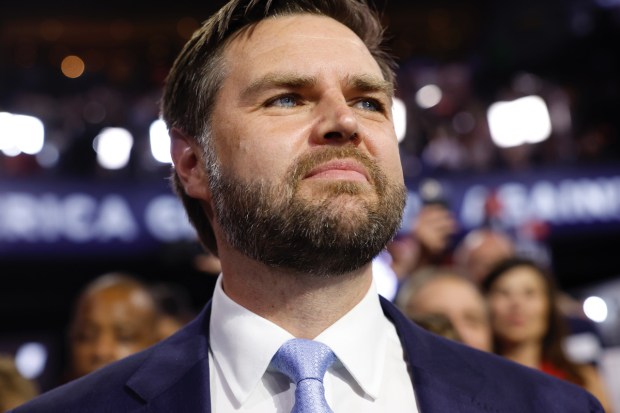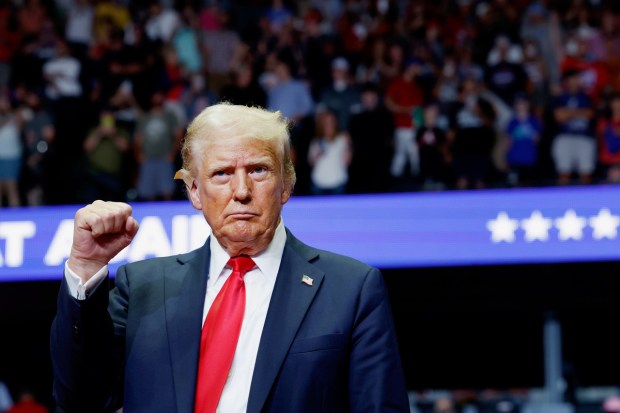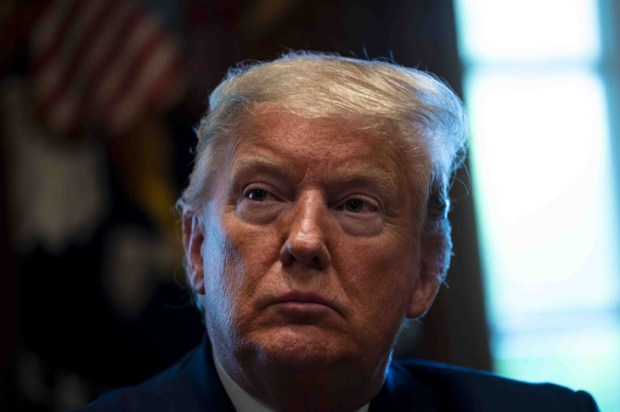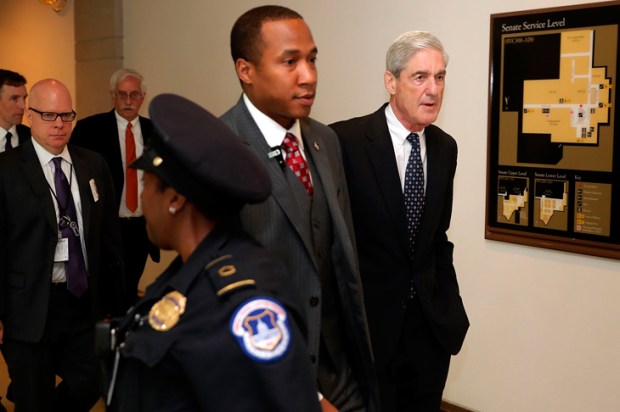The Trump shooting already looks set to disappear down the same rabbit hole as the JFK and RFK assassinations, Epstein’s ‘suicide’, the Las Vegas shootings and other epic unsolved US criminal mysteries. To paraphrase 51 US intelligence analysts, the assassination Trump tale ‘has the classic earmarks’ of a botched security services operation; whether to protect Trump or take him out, you be the judge.
Consider, for starters, the lack of official detail on what happened that day. In well-run nations, law enforcement officials would have already had multiple press conferences with agency heads to display the weapon, reveal ballistics information, detail the shots fired and by whom, explain safety lapses on the day and answer media queries. But in the broken US, where half a dozen agencies shared security tasks, federal agencies have had no traditional press conferences, much less daily ones providing detail. Instead media pieces have relied on largely anonymous sources from various agencies, often contradicting each other, and occasional unsatisfactory remarks from former Secret Service director and overall boss, Kim Cheatle, she who risibly blamed difficulties on a sloping roof. The story is changing daily, and much of what is reported may in time turn out to be wrong, although it’s moot whether the truth will ever emerge. I would note, though, that telling the truth requires little preparation; it’s when you are trying to create a narrative, or cover your back, that you need time to coordinate.
This factual vacuum has been filled by informed and sometimes wild speculation in the social media space, which points out another difficulty facing the Biden/Harris regime: their story has to hold up under the withering gaze of a multitude of smartphones, videos, whistleblowers and digital media. Unlike the Warren Commission, say, after the JFK shooting, whose lies took years to expose, these days a squadron of citizen sleuths will check every detail in real time.
For example, a lively debate is already running over how many shooters targeted Trump, the number of weapons used and bullet trajectories and distances. Respected Peak Prosperity economist Chris Martenson argues from audio analysis that two shooters were targeting Trump. This claim is supported by a CNN report citing audio forensics from Colorado University which says that three weapons were used. The FBI, however, said the shooter acted alone – even before they were able to get into his phone. Without official information, conjecture fills the space.
What is certain are the bungles. The Secret Service failed to turn up to a 9 a.m. SWAT and sniper briefing on the day of the rally, and local law enforcement said communications were siloed, with no common radio channel for all services, according to Wisconsin Senator Ron Johnson’s preliminary report. Johnson said federal law enforcement were refusing to comment, but local officials had reported the potential threat to the service an hour before Trump took the stage – and had had that threat report confirmed. Before resigning, Cheatle told Congress, surprise surprise, that no radio communications from 13 July were kept.
Trump has revealed he wasn’t warned not to go on the rally stage, despite the shooter Thomas Crooks being singled out as suspicious. Some 10 to 15 minutes before Trump took the stage, spectators were loudly shouting about the presence of a man with a rifle on the roof, much like the crowd in a pantomime pointing out the villain (‘He’s behind you!’), but still no protective action was taken.
Then there is the extraordinary failure to secure the roof the shooter used. It’s the perfect sniper site, only too obvious, and was noted as a key weakness in a security walkthrough the day before. Yet no one was stationed there.
The shooting has further odd details. Consider the timing. It came on Saturday 13 July, two days before the Republican National Convention, the last gasp attempt for anyone trying to get Trump off the ballot and install a different nominee. Moreover, the Supreme Court had effectively ended the Democrats’ lawfare against Trump on 1 July, by granting him immunity; did this trigger a decision on new tactics? The immunity decision cleared Trump’s schedule, and the Butler, Pennsylvania rally was announced two days later on 3 July. Neither security nor any bad actors had a lot of time to prepare.
The shooter, seemingly a textbook 20-year-old loser, worked as a dietary aide in a nursing home, but somehow had two phones, three encrypted overseas bank accounts, and enough money to buy a drone to scope the site, a range-finder, explosives, and he apparently used a van as well as a Hyundai. However, he had no social media presence. Really? And why did the FBI hose down the crime scene rooftop the day after the event?
Despite early denials, it turned out Trump’s team had indeed been requesting enhanced resources for two years, including more agents and snipers – only to be refused. Lawyer/podcaster Robert Barnes, citing conversations with Donald Trump Jnr, reported Trump had a very good core security team, but many had been given that day off. Further, he says good operators from the local police were diverted to a Jill Biden event.
It seems clear that Trump was a victim of security stripping, much like Robert F. Kennedy Junior who was long denied any Secret Service protection. And this is where the grey area between security incompetence and deliberate endangerment emerges. Senator Josh Hawley tweeted that most of Trump’s security detail weren’t even Secret Service agents but were unprepared and inexperienced Homeland Security personnel, which may explain the embarrassing failure to holster weapons by female agents. Was this reckless indifference or wilful vulnerability? Entrusting political rivals to ensure one’s physical safety seems designed to tempt fate.
It’s clear that at some level Biden officials turned a blind eye to Trump’s safety, that day in particular. Security stripping, and manipulating patsies to take the fall have long been part of the dirty tricks section of US intelligence agencies’ playbooks. (The J6 riots occurred when Democrat officials refused to provide the extra 10,000 National Guardsmen that Trump had authorised; and entrapment claims are before the court in the farcical kidnapping plot concerning Michigan Governor Gretchen Whitmer, in which 12 of 18 ‘extremists’ turned out to be either FBI informants or agents or otherwise FBI-linked).
Why get your own hands dirty when you can get someone else to do the job?
What the Washington players do need is plausible deniability, which this arms-length approach grants them. As podcaster Joe Rogan noted, ‘When they organise assassinations, it looks just like that… (they) have some f–king loser kill the president, and then they kill the f–king loser, and that’s a wrap.’
Got something to add? Join the discussion and comment below.
You might disagree with half of it, but you’ll enjoy reading all of it. Try your first month for free, then just $2 a week for the remainder of your first year.












